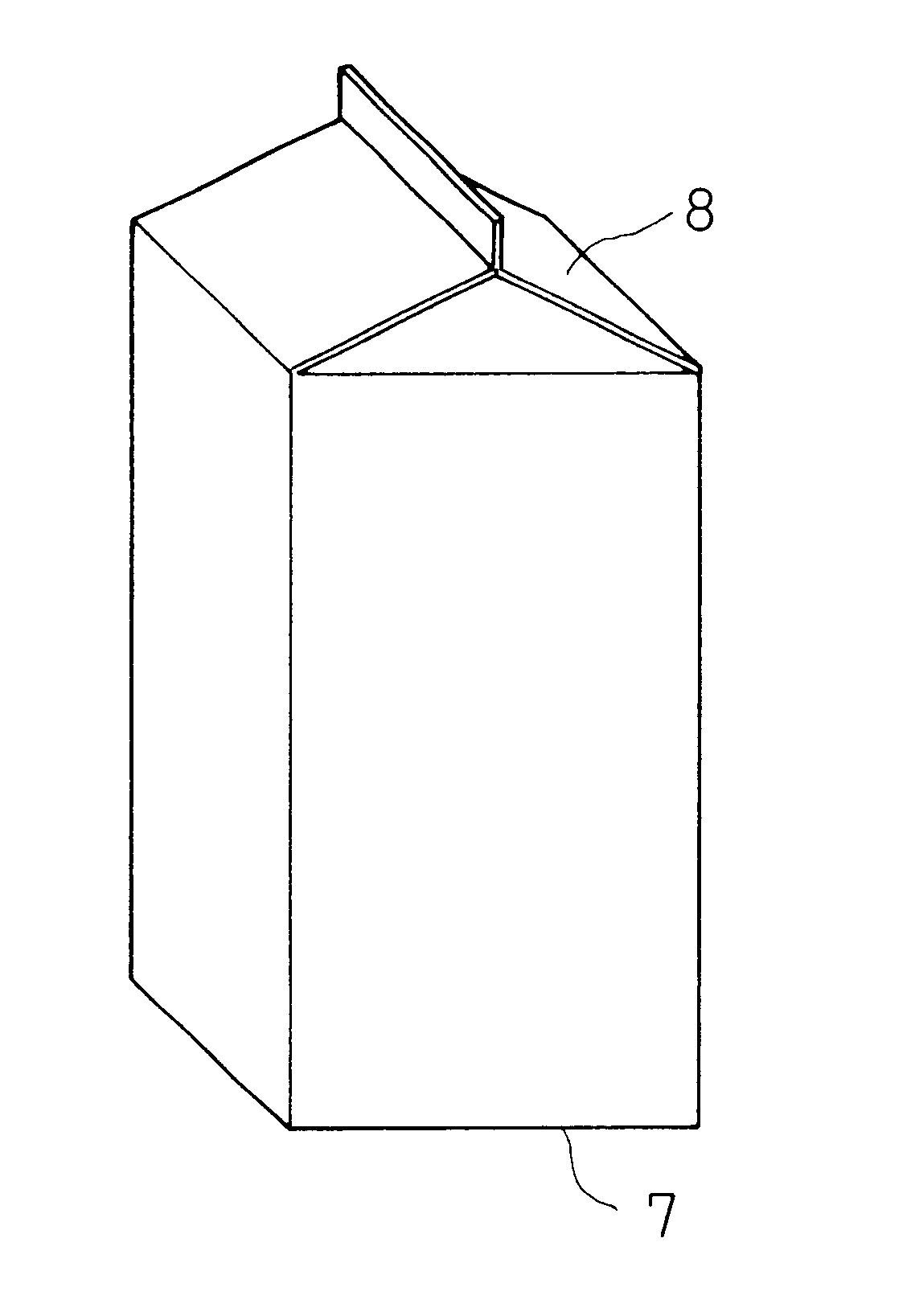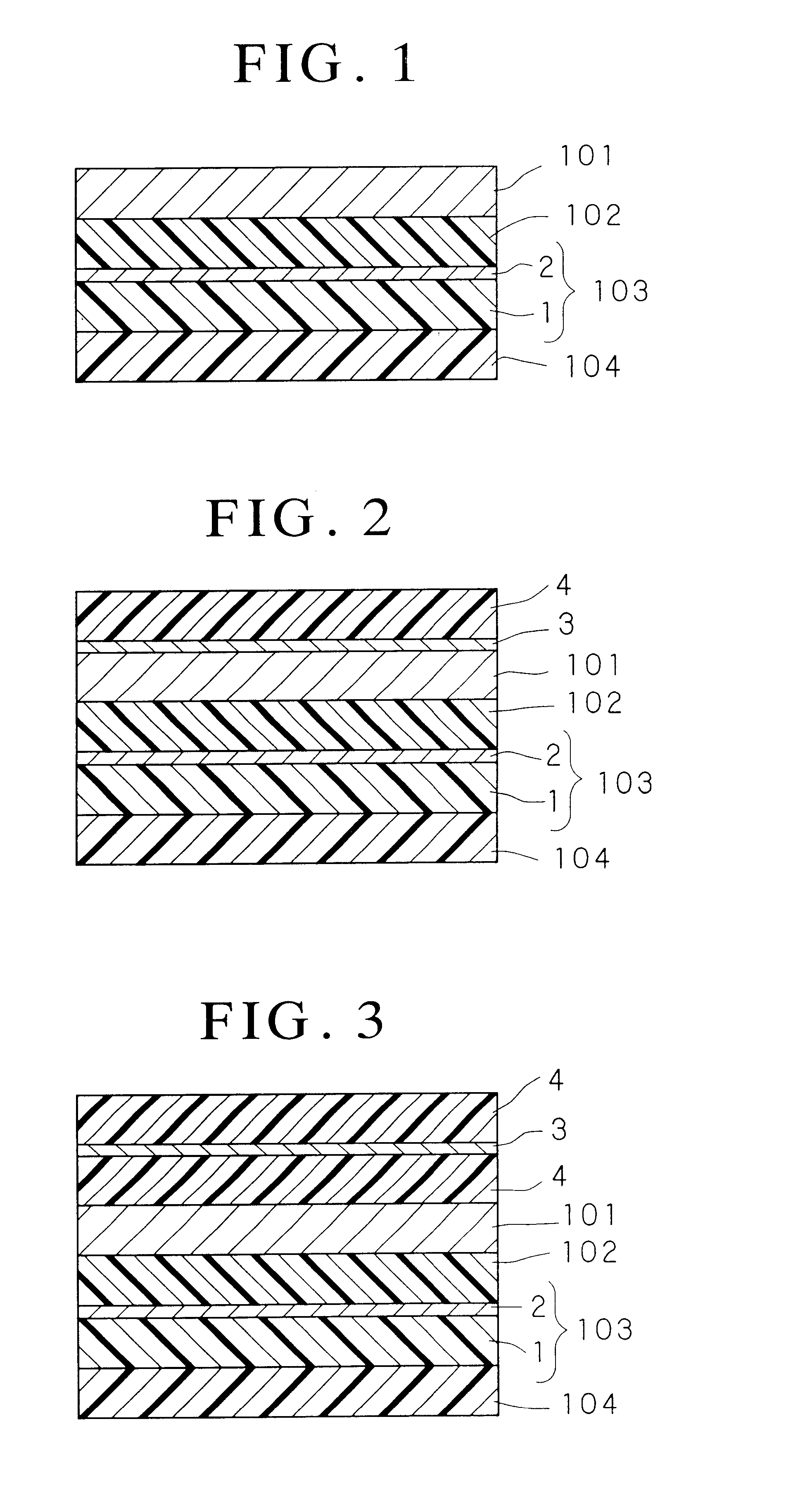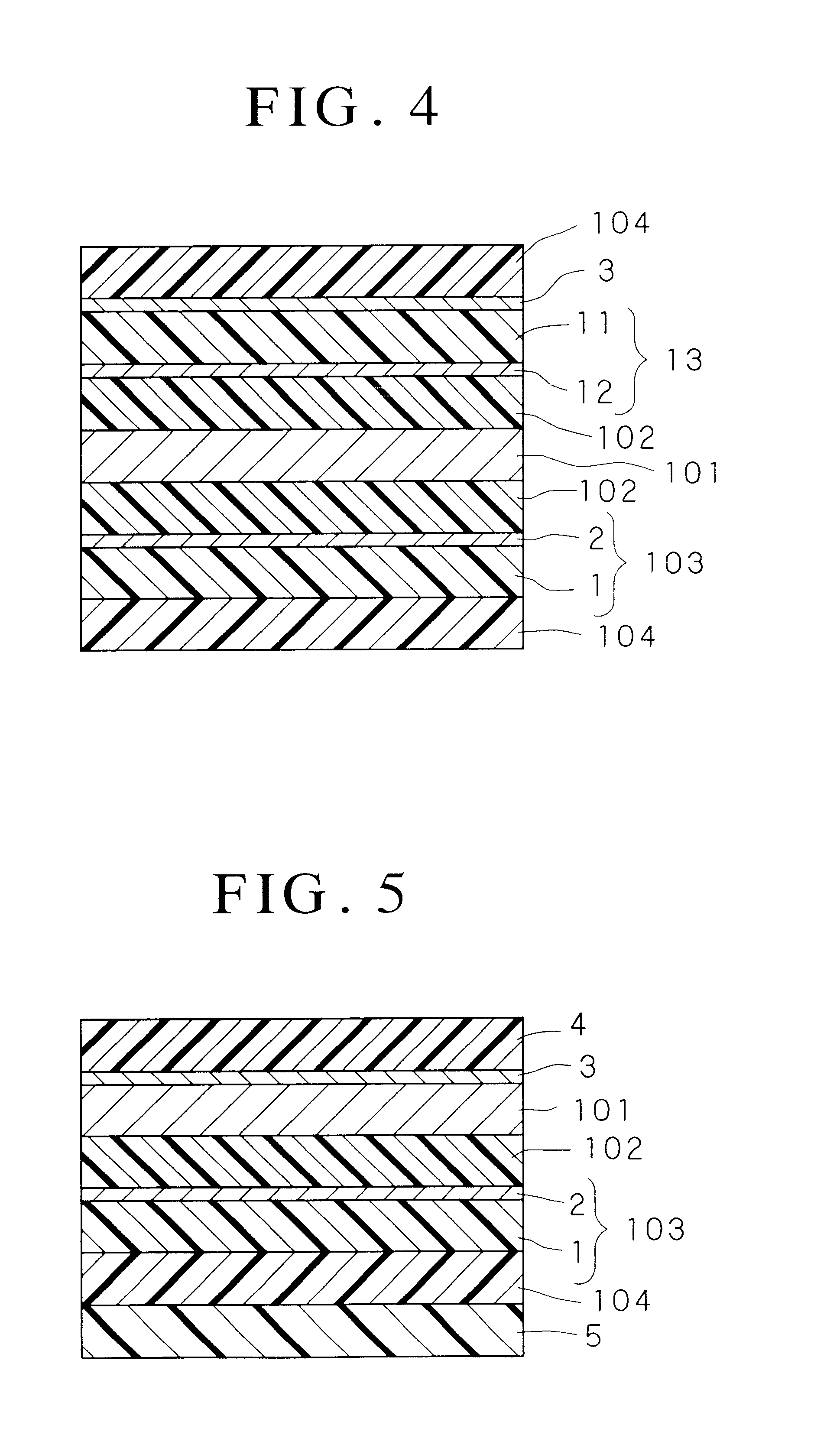Laminate with gas barrier properties, production method therefor, and paper container employing said laminate
a technology of gas barrier properties and laminates, which is applied in the field of laminates with gas barrier properties, production methods therefor, and paper containers employing said laminates, which can solve the problems of increasing production costs, affecting work environment, and easy torn by hand in containers employing this type of laminated paper
- Summary
- Abstract
- Description
- Claims
- Application Information
AI Technical Summary
Benefits of technology
Problems solved by technology
Method used
Image
Examples
first embodiment
FIG. 1 shows a first embodiment of the present invention, and is a cross-sectional diagram of the laminate that forms the paper container. In this embodiment, a (IV) synthetic resin layer 102, (II) gas barrier layer 103, and (III) epoxy-group-containing resin composition layer 104 are sequentially laminated onto one surface of the (I) paper layer 101. The (I) paper layer 101 is formed so as to be on the outer surface of the container. From among the materials disclosed in (II) above, a plastic film monolayer, which has a low rate of gas permeability, or an inorganic vapor deposited synthetic resin layer is employed as the (II) gas barrier layer 103 in this embodiment. It is particularly preferred to employ an inorganic vapor deposited polyester layer in which an inorganic vapor deposited layer 2 is formed onto a polyester layer 1. Inorganic vapor deposited layer 2 is disposed to the side of polyester layer 1 directed to the outside of the container, and is laminated to be in contact...
second embodiment
FIG. 2 is a laminate according to the second embodiment. The laminate according to this embodiment is formed by sequentially laminating a printed layer 3 and a LDPE layer 4 on to paper layer 101 of the laminate shown in FIG. 1. When forming a container of this type of laminate, the layers in order from the outside of the container are LDPE layer 4 / printed layer 3 / (I) paper layer 101 / (IV) synthetic resin layer 102 / (II) gas barrier layer 103 / (III) epoxy-group-containing resin composition layer 104.
Not only are the same effects obtained as in the first embodiment, but in addition, printing is carried out to the outer surface of (I) paper layer 101 in this design. As a result, a paper container which is superiorly designed for use as a packaging container is obtained, and information required to appear on the container can be displayed in print. In addition, printed layer 3 is protected by LDPE layer 4, which is the outermost layer of the container, and moisture is prevented from penetr...
third embodiment
The third embodiment is formed by additionally laminating LDPE layer 4, printed layer 3 and a LDPE layer 4 in sequence on top of paper layer 101 of the laminate shown in FIG. 1. When forming a container of this type of laminate, the layers in order from the outside of the container are LDPE layer 4 / printed layer 3 / LDPE layer 4 / (I) paper layer 101 / (IV) synthetic resin layer 102 / (II) gas barrier layer 103 / (III) epoxy-group-containing resin composition layer 104.
The same effects are obtained as in FIG. 1 and the second embodiment. In addition, however, since a LDPE layer 4 is provided in between printed layer 3 and paper layer 101, printing can be carried out to LDPE layer 4, which has a smooth surface. Accordingly, clearer printing is enabled as compared to when printing on a rough surface. Thus, there is an even greater improvement in packaging container's design potential.
LLDPE, propylene polymer, EVA, E(M)A, ethylene-maleic anhydride copolymer, ethylene-maleic anhydride-(meth)acryl...
PUM
| Property | Measurement | Unit |
|---|---|---|
| melting point | aaaaa | aaaaa |
| temperature | aaaaa | aaaaa |
| temperature | aaaaa | aaaaa |
Abstract
Description
Claims
Application Information
 Login to View More
Login to View More - R&D
- Intellectual Property
- Life Sciences
- Materials
- Tech Scout
- Unparalleled Data Quality
- Higher Quality Content
- 60% Fewer Hallucinations
Browse by: Latest US Patents, China's latest patents, Technical Efficacy Thesaurus, Application Domain, Technology Topic, Popular Technical Reports.
© 2025 PatSnap. All rights reserved.Legal|Privacy policy|Modern Slavery Act Transparency Statement|Sitemap|About US| Contact US: help@patsnap.com



